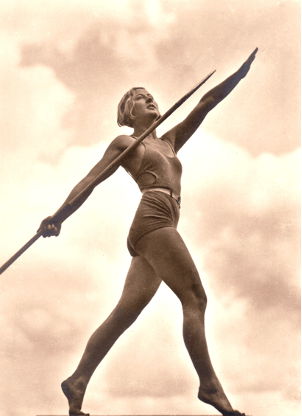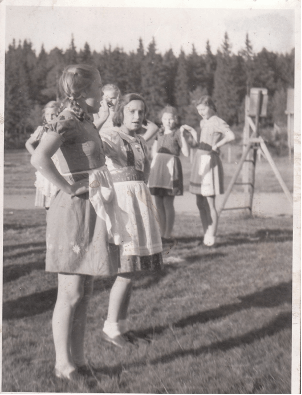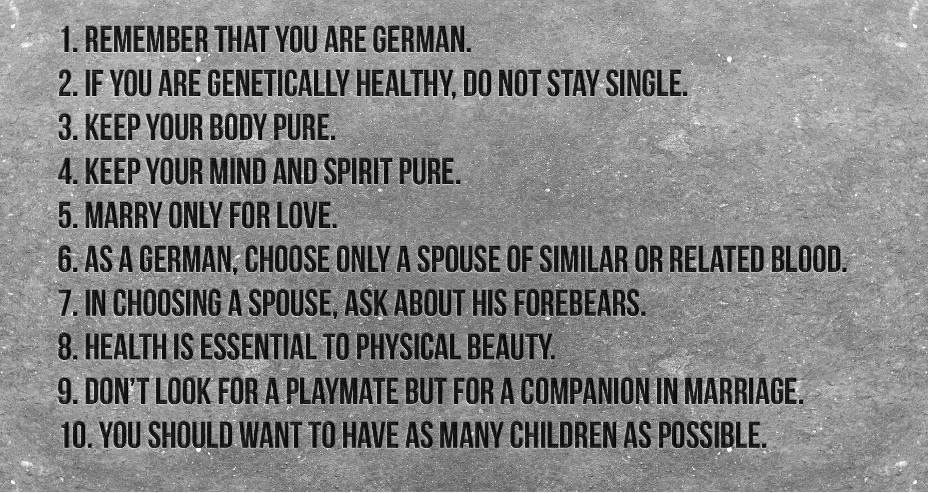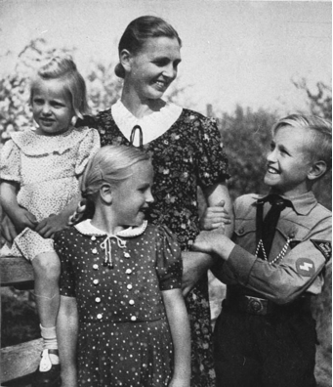
The ideal woman - theory

The ideal woman - reality

The ideal woman - theory

The ideal woman - reality
The Nazi view towards women
Key question:
What was the ideal role of women in Nazi
society?
Base answer:
A women’s place was in the home
The ideology of National Socialism was in
contrast to normal social trends. Nazism
fundamentally opposed social and economic female
emancipation and had the following aims for
women:
• To have more children and to take responsibility for bringing them up.
• To care for the house and their husbands.
• To stop paid employment except for very specialist vocations such as midwifery.
In the view of the Nazis, nature had ordained that the two sexes should fulfil different roles, and it was the task of the state to maintain this distinction. As the Nazi slogan presented it, they were to be devoted to the three German Ks: ‘Kinder, Küche, Kirche’ (‘children, kitchen and Church’). Such dogma was upheld by the party, even before 1933 – there was not a single female Nazi deputy in a Reichstag position.

The Nazi “ten commandments” for the choice of a spouse
A growing population was viewed as a sign of
national strength and status.
However,
the population was declining. If the number of
Germans was levelling out, how could they demand
nationalist expansionism in eastern Europe
(Lebensraum)? It was important
to increase the population greatly and, to
achieve this, women were portrayed as primarily
the mothers of the next generation – an image
that suited Nazi anti-feminism.
Female Employment
Key question:
Did the Nazis reduce the number of women in
employment?
Base answer:
Yes, economic necessity forced more women
into the workplace Initially, attempts to
reduce the number of women in work were
quite successful. Between 1933 and 1936
married women were in turn debarred from
jobs in medicine, law and the higher ranks
of the civil service. Moreover, the number
of female teachers and university students
was reduced – only 10 per cent of university
students could be female.
Nazi incentives
In other sectors of the economy a mixture of
party pressure and financial inducements was
employed to cajole women out of the workplace
and back into the home. Interest free loans of
RM600
(RM were Reichsmarks, the Nazi
currency) were made available to young women who left
work to get married.
The effects of
the Depression also worked in favour of Nazi
objectives - the Depression
enabled the
government to justify its campaign for women to
give up work for the benefit of unemployed
men.
Nazi women’s organisations
Women were specifically excluded from Nazi
government. The only employment opportunities
available to them were within the various Nazi
women’s organisations, such as the National
Socialist Womanhood (NSF, National
Sozialistische Frauenschaft) and the German
Women’s Enterprise (DFW, Deutsches Frauenwerk) -
both tools for the propagation of the
anti-feminist ideology through cultural,
educational and social programmes.

There she is - the perfect German housewife and mother, helping only in social organisations.
There were problems though.
Effects
By 1937 Nazi ideological convictions were
threatened by the pressures of economic
necessity.
The introduction of
conscription and the
rearmament boom from the
mid-1930s soon led to an increasing
shortage of labour, as the Nazi
economy continued to grow.
The anti-feminist ideology could only be upheld if economic growth was slowed down, and that would restrict the rearmament programme.
Market forces inevitably began to exploit this readily available pool of labour, and the relative decline in female employment was reversed.
Between 1937 and 1939 the percentage of women in work increased from 31 per cent to 33 per cent of the total workforce.